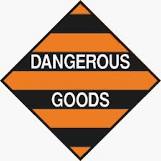
If you are not sure whether you are involved in the transport of dangerous goods have a look at this list and if you are engaged in any of these activities then the answer is yes:
- Packing dangerous goods or marking packaged dangerous goods and unit loads
- Consigning dangerous goods
- Loading or unloading dangerous goods into or out of a vehicle or into or out of a container to be put into a vehicle
- Placarding (putting labels or panels) on containers or vehicles in which dangerous goods are transported
- Involved in the preparation of shipping documentation
- Maintaining vehicles and equipment used in the transport of dangerous goods
- Driving vehicles and equipment used in the transport of dangerous goods.
- Being the consignee (the receiver) of dangerous goods
- Following the legal procedures in a dangerous situation
At http://www.safework.sa.gov.au/ you can access a downloadable booklet that outlines the requirements associated with the transport of dangerous goods by road for example:
A packer is a person who packs dangerous goods or other goods for transport by road who:
- Puts the goods in packaging.
- Puts packaged goods in an outer packaging or unit load for transport by road.
- Manages, controls or supervises such activities.
A packer must not pack dangerous goods if:
- The packaging is unsuitable or not approved.
- The package will not be appropriately marked when the goods are transported. The markings are false or misleading.
Marking of packages and unit loads
A standard marking for a package, when specified in a flow chart for a package, is a marking that includes:
(a) The proper shipping name of each type of dangerous goods in the package
(b) The UN Number for each type of dangerous goods in the package, prefaced with either “UN” or “UN No.”
(c) A class label for each class of dangerous goods in the package
(d) At least one each of any subsidiary risk label that is applicable to the goods in the package and that is not the same as any class label applicable to the goods in the package
(e) The name and address in Australia of the manufacturer or consignor of the dangerous goods, or their agent.
Source:http://www.safework.sa.gov.au/contentPages/docs/roadTransDangGoods.pdf
There are a number of steps that need to be followed to ensure that dangerous goods are transported by road safely from pick up to delivery.
The SafeWork South Australia downloadable booklet at the link above is a resource that outlines the requirements of all people involved in the transport of dangerous goods.



